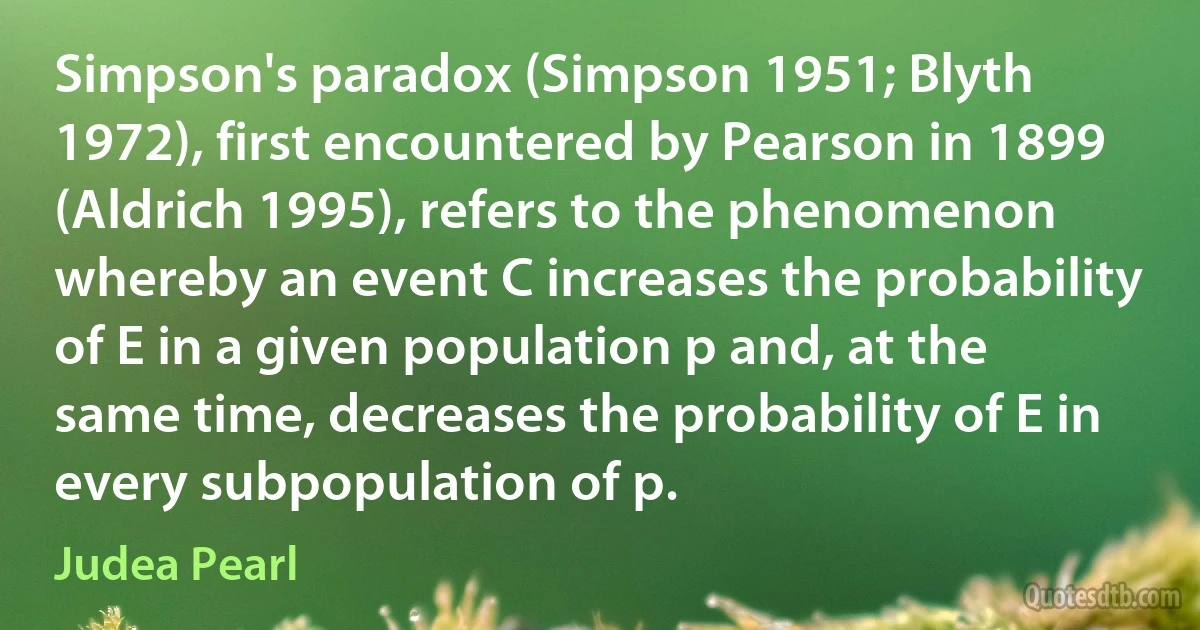
Simpson's paradox (Simpson 1951; Blyth 1972), first encountered by Pearson in 1899 (Aldrich 1995), refers to the phenomenon whereby an event C increases the probability of E in a given population p and, at the same time, decreases the probability of E in every subpopulation of p.
Judea PearlRelated topics
given paradox probability time simpsonRelated quotes
God is nearer to us than any man at every time. He is nearer to me than my raiment, nearer than the air or light, nearer than my wife, father, mother, daughter, son, or friend. I live in Him, soul and body. I breathe in Him, think in Him, feel, consider, intend, speak, undertake, work in Him.

John of Kronstadt
The theory of chance consists in reducing all the events of the same kind to a certain number of cases equally possible, that is to say, to such as we may be equally undecided about in regard to their existence, and in determining the number of cases favorable to the event whose probability is sought.

Pierre-Simon Laplace
The White House New Media team circulates multiple highlights each day of what people are looking for online - Twitter trending topics, popular Google searches, etc. - and it gives us a sense of what's breaking through, what isn't, and a sanity check for what the larger online population cares about at any given time.

Daniel Pfeiffer
A thrown-stone trajectory is a good metaphor for so many phenomena: the curve of an event, any event; the curve of a life, any life; the curve of a hypothesis; the curve experienced in the manufacture of a work of art; the curve of interest experienced in the manufacture of a catalogue.

Peter Greenaway
